The Best Puerto Rico Coffee Brands
I bet you would agree: Puerto Rico is a well hidden gem in terms of quality coffee beans. You might even agree that The Best Puerto Rico Coffee Brands are some of the highest quality in the world.
In this post, you will learn the reasons Puerto Rican coffee beans have emerged as a world player in the world coffee bean market.
In this article we will share with you some background on the history of Puerto Rico coffee brands and the coffee beans in those brands. From this history, you will learn the names to look for when shopping for the best coffee beans from Puerto Rico.
A Moment To Recognize That Help Is Needed…
Before we continue, we would like to recognize that the people of Puerto Rico are suffering. With that in mind, if you were a fan of Puerto Rico coffee like we have been, the best way to get back to enjoying that great coffee is to help the entire island to get back on it’s feet with relief.
If you don’t know how to help, here are several avenues:
- YouCaring and JJ Barea (one of my favorite all-time NBA players) is helping HERE
- Help NBA Superstar Carmelo Anthony’s efforts HERE
- United Way is always working to help, their Puerto Rico efforts are HERE
- Consumer Reports give advice on how to help HERE
- Global Giving is almost halfway to their goal of $10 million. Help them reach it HERE
Our prayers go out to the people of Puerto Rico. Any help is appreciated.
Do You Want the BEST Puerto Rico Coffee Brand?
If you don’t want to follow along with some of the interesting Puerto Rican history, you can just scroll down to our list of the best Puerto Rico coffee brands (or click here).
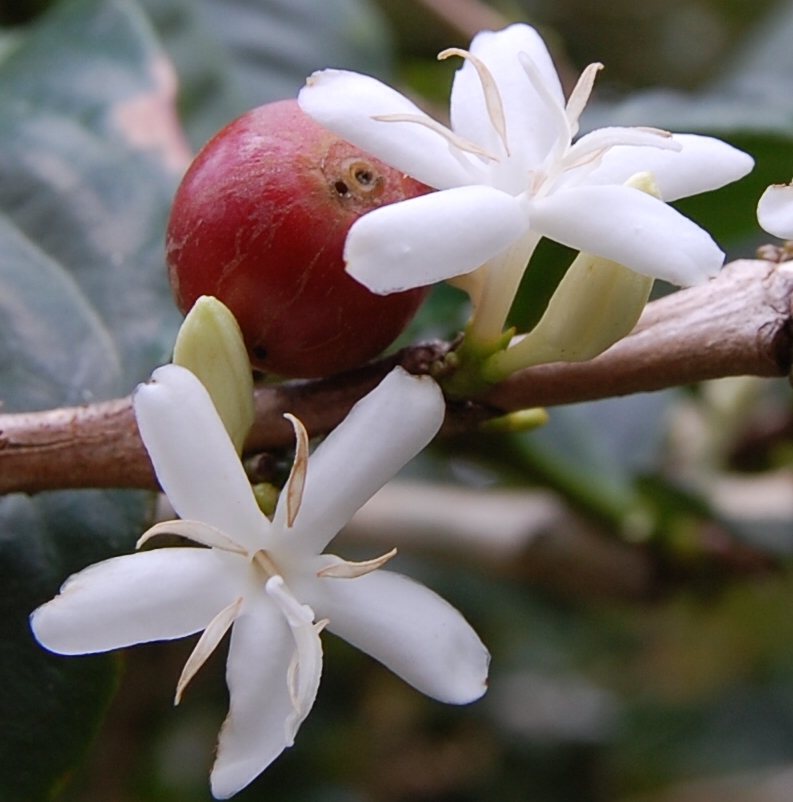
“Coffee flower and a prematurely ripe bean.” by U.S. Fish and Wildlife Service Southeast Region, via Flickr (CC BY 2.0)
Here’s the deal:
During our extensive research, we found a few great beans that give proper representation for the title of The Best Puerto Rico Coffee Brands.
Puerto Rico is an up and comer when it comes to world wide coffee bean production. High quality is one of the reasons why.
Why is the History of Coffee in Puerto Rico Important to You?
Before we jump right into identifying the best Puerto Rico coffee brands, we’ll look into the history of Puerto Rico to get a feel for how coffee has progressed over time.
What’s the real story?
Starting around the mid-1700s, coffee bean production in Puerto Rico was an very popular during the Spanish Colonial rule. Production fell later on with the entrance of the United States. However, it has had a recent resurgence.
There have been three major periods of time that mark different levels of growth (or degrowth). Each of these stints of time were very different in terms of coffee production.
Why is this important?
It’s important because many of the names you will find in quality Puerto Rican coffee beans originated from some of the names that established coffee in the early years of Puerto Rico.
Once you learn those names, you will recognize great coffee beans on the store shelf.
Spanish Colonial Rule: How A Strong Base of Coffee Formed in PR
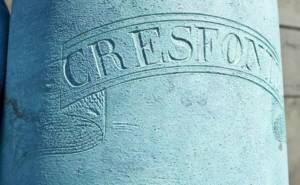
“fore barrel inscription – south Spanish bronze cannon – Spanish-American Memorial – Arlington National Cemetery – 2013-08-24” by Tim Evanson, via Flickr (CC BY-SA 2.0)
When Columbus “discovered” America, the rest of Europe was soon to follow.
The Spanish Colonial rule set up camp in Puerto Rico and were there until the Spanish-American War ended in 1898.
That’s not all…
While under Spanish Colonial rule, coffee was taking root through out many of the Caribbean islands.
Specifically the French started farming coffee on the island of Martinique.
Why is this important?
From Martinique, variants of Arabica coffee trees first made it to Puerto Rico. Bourbon, Typica, Pacas and Catimor were some of the varieties that flourished.
During the Spanish Colonial coffee growing days, Puerto Rico grew to become the seventh largest producer of coffee in the world.
During this time several plantations sprouted and became very prestigious sources of coffee beans.
Here was a brutal truth about Puerto Rican coffee at that time:
The end of the war presented Puerto Rico to the United States. And, with the exit of Spanish rule, most of the expertise and businesses that supported Puerto Rican coffee bean production (shipping, packaging, shipping, etc.) disappeared or withered.
Annexation by the US: A Temporary Blight Caused by the US
Here’s the deal:
With the end of the Spanish-American War in 1898, and the takeover by the United States, coffee production was severely damaged. New owners from the United States had different backgrounds. So, new crops were farmed instead of coffee.
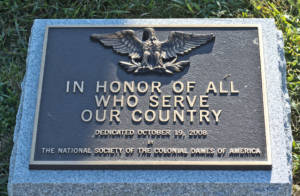
“plaque – Spanish-American War Memorial – Arlington National Cemetery – 2013-08-24” by Tim Evanson, via Flickr (CC BY-SA 2.0)
Also, the buyers of coffee beans from Puerto Rico were often Spanish sources.
What did this mean?
This meant that no Spanish buyers were around to export the coffee beans to after the war.
Bottom line?
The American influences led to a rise of sugar cane and those crops flourished in Puerto Rico. Unfortunately, the coffee bean crops saw significant decline and were the most affected.
So, what’s happening now?
Only in recent years has coffee bean production increased. Production levels are now starting to rival the golden years during Spanish Colonial rule.
But, there’s a catch…
Puerto Rican coffee Brand production has been limited by the inability to find enough coffee bean pickers to harvest all of the abundance of coffee beans.
These bean picker jobs just don’t pay enough and with economic improvements in Puerto Rico, there are enough other jobs on the island these days that just pay more and are less physically demanding.
Recent Years Explosion: PR Farmers Figure Out There’s $$$ in Them There Hills!
The best part…
Despite all of the challenges that coffee farmers have had in Puerto Rico since it was taken over by the US, coffee has still managed to grow in popularity in recent years.
How did this happen?
Part of the growth is due to the recent popularity of ethically sourced and artisan coffee. These coffee characteristics are continuing to grow in popularity and with more demand comes more need for supply.
Why is this important?
These simple economics are driving the price for this type of specialty coffee. And, with the higher return on investment comes the desire to grow more of this type of coffee.
Many of the farms that had been closed down after the Spanish-American War have been resurrected. And, they are growing back into their old glory days during Spanish Colonial rule.
Local Farming Tradition: The Maricao Festivals Bring Life to Coffee Annually
So:
From the beginning of coffee bean production time in Puerto Rico, farmers have celebrated the completion of the picking season in February.
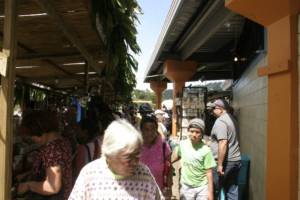
“Festival Scene” by J. Carr, via Flickr (CC BY 2.0)
The town of Maricao celebrates La Fiesta Del Acabe every year. The three event draws vendors from miles away to set up booths to sell their food specialties.
The vendors and families bring a litany of dishes that include:
- Banana brittle
- Mofongo
- Nutella frappes
- Pork
- Rice and Beans
- Rum lollipops
It isn’t hard to find some of the freshest high quality coffee at the festival. Fresh Puerto Rico coffee brands with a sprinkle of cinnamon is a well known hit at this festival.
Time for a comedy break:
Here is Big Papi (the SNL version) talking when his team has a big celebration with many of the items above including Mofongo. He talks about it being a Dominican tradition. So, you can see that this tradition is good enough to have made it all the way to Puerto Rico:
Here Are the Puerto Rican Names You Should Look For
Here’s the deal:
With the almost exponential growth of coffee beans in Puerto Rico, a few regions of this island stand out when it comes to quality coffee production:
- Adjuntas
- Jayuya
- Lares
- Las Marías
- Ponce
- San Sebastián
- Yauco
Why does this matter?
When you shop for coffee beans from Puerto Rico, these are the Puerto Rico coffee brands that are made with beans from farms or haciendas that reside in this list of cities or municipalities.
These names stand for coffee bean quality.
Cordillera Central Coffee Farming
So:
The Cordillera mountain range in Puerto Rico is a string of mountains that divides the island in half. With 49 peaks in all, many of the highest mountains hit that sweet spot we find for for top notch coffee production.

“Puerto Rico Rainforest-360-Pano-8k” by Gordon Tarpley, via Flickr (CC BY 2.0)
The top 10 peaks range from 3500 feet to 4400 feet.
Why is this important?
Volcanic activity from approximately 185 million years ago produced soil that is rich in minerals.
Bottom line:
Where ever you find the best gourmet coffee in the world, you find these same conditions where ancient volcanic activity created this amazingly rich soil.
Contrary to its name, the Central Cordillera is really the Western most set of mountain ranges as you follow the mountain ranges from west to east across Puerto Rico. Central Cordillera ranges start near San Germán towards the western end of the island. They then stretch east just past the midpoint of the island.
The Cordillera name is one of the quality names that is making a comeback.
Adjuntas Coffee Farming
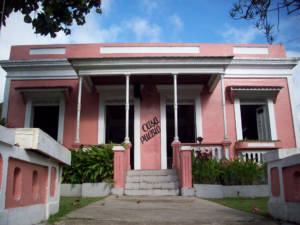
“Casa Pueblo, Adjuntas PR” by Cryo Mariena, via Flickr (CC BY-ND 2.0)
Adjuntas is a small municipality that is built right into the side of the mountains. The sixth highest peak of Puerto Rico is Monte Guilarte at just under 4000 feet. The second highest peak in Adjuntas is Vaquiñas at 3346 feet.
Look:
Even though Adjuntas is a small area, this is a major source of coffee beans. As of 2012, 32% of the coffee consumed on the island of Puerto Rico was grown in Adjuntas.
Evidence of how important coffee is to Adjuntas, is that the municipalities Coat of Arms includes two coffee branches that surround the Adjuntas shield and wall. Due to copyright limitations I can’t display the Coat of Arm on my site. But, you can view the Coat of Arms here.
One of the more famous off the beaten path Haciendas is Sandra Farms Coffee. The tour comes highly recommended if you happen to be in the neighborhood.
Key Takeaway:
Names to look for from this quality coffee bean growing region are Adjuntas and Sandra Farms.
Jayuya Coffee Farming
Smack dab in the middle of the island, Jayuya is a very small municipality that houses a fair number of Haciendas.
Monte Jayuya is the second highest peak in Puerto Rico at 4252 feet. The municipal of Jayuya is residence for five of the highest 10 peaks in Puerto Rico.
What’s the real story?
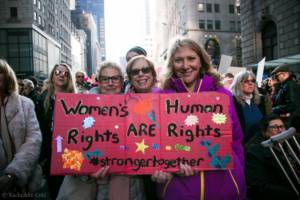
“Women’s March NYC” by Karla Cote, via Flickr (CC BY-ND 2.0)
Tourism is very popular for Jayaya. Not only are there Coffee Haciendas to visit, there is also Nemesio Canales Museum and the Cemí Museum.
But, that’s not all…
Nemesio Canales is one of the more famous people that was born in Jayaya. Nemesio was very talented and was know as an essayist, journalist, novelist, and playwright.
Canales as a politician and activist who defended women’s civil rights introduces a bill in 1909 to give women “full civil rights”. This included the right to vote. The bill was defeated as only 7 of the 30 votes were for the bill.
Two Haciendas of note in Jayaya are Hacienda San Pedro and Hacienda Tres Picachos. Both provide tours. Although, the San Pedro tour seemed to lack a certain friendlyness. So, if you have to choose, I’d go with the Tres Picachos tour.
Key Takeaway:
This part of the island provides high quality brand names like Jayaya, San Pedro, and Tres Picachos.
Lares Coffee Farming
Lares municipality is next door to San Sebastián to the East. This inland municipal has a small footprint.
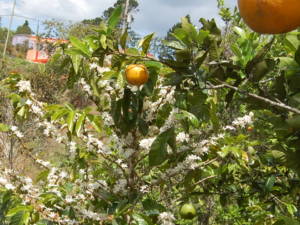
“Coffee tree and orange trees, multicroping in Maricao, Puerto Rico.” by U.S. Fish and Wildlife Service Southeast Region, via Flickr (CC BY 2.0)
Although, it is small, Lares is more diverse in what it grows. Coffee is not its only crop.
Lares also grows these other fruits and vegetables:
- Bananas
- Oranges
- Tomatoes
They also have a very strong tourism draw.
Here’s an interesting fact:
One of their famous attractions is the town Ice Cream Shop called Heladería de Lares.
The shop draws people from far and wide with exotic flavors like Garlic ice cream, Codfish ice cream, and Corn ice cream.
Watch this video where the Travel Channel’s Andrew Zimmern talks about visiting Lares and other small towns in Puerto Rico.
You can watch the whole long video to see many of the different flavors of Puerto Rico. But, I’ve forwarded to the part where he visits the famous ice cream parlor.
Enjoy!
While researching Puerto Rico coffee brands, we found that Lares was one of the locations that grow the coffee beans for the high quality coffee bean products.
Key Takeway:
Lares is a name that stands for coffee quality. We found several high quality Puerto Rico coffee brands that source their beans from Lares.
Las Marías Coffee Farming
Las Marías is immediately south of San Sebastián in the western Cordillera mountain range. The municipality is about 15 miles off the western coast of Puerto Rico. And, it is pretty close to the middle of the island from north to south.
While coffee is big in Las Marías, the area is more known for their orange crops. Their town nickname is Pueblo de la China Dulce, or Town of Sweet Oranges.
In addition to oranges and coffee beans, farms in Las Marías also produce plantains, bananas, and citrus fruits.
There are several older Coffee Bean Haciendas in Las Marías that attract tourism.
Key Takeaway:
The name brand you want to remember is Las Marías.
Ponce Coffee Farming
Ponce is a city on the southern side of Puerto Rico. It is also a municipality. The borders of Ponce include the Cordillera Central peak of Cerro de Punta, the highest point in Puerto Rico.
Why is this important?
As we know, high elevation coffee farming produces high quality coffee beans.
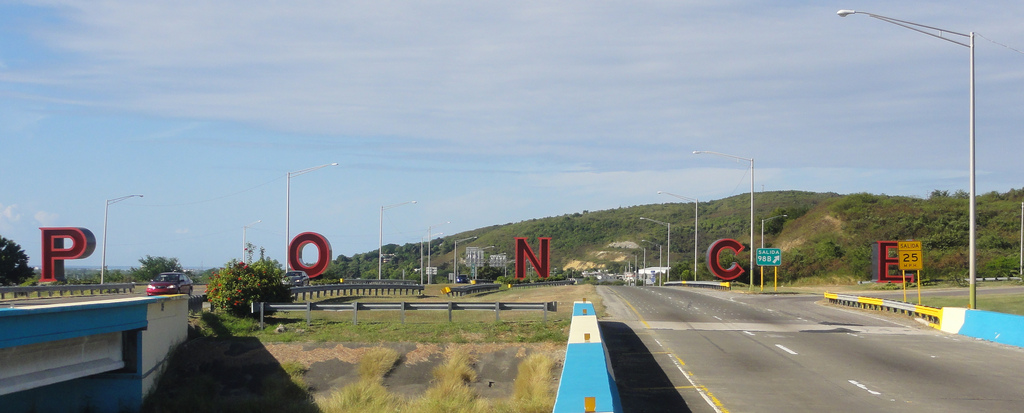
“DSC05090Z – Letras de PONCE in Barrio Sabanetas, Ponce, Puerto Rico” by Roca Ruiz, via Flickr (CC BY-SA 2.0)
What’s happening here?
Coffee farming in Ponce followed the same trajectory as coffee in general over the last 500 years.
During Spanish Colonial rule, Ponce was a major city in Puerto Rico. It was a thriving financial hub.
After the US invasion, as the coffee industry faded, so did Ponce as a dominant force for this island.
San Juan was the chosen by the American as the central location to administer the island to further divert attention away from coffee.
Then, the resurrection:
In 2013, the Fideicomiso de Conservación de Puerto Rico (Conservation Trust of Puerto Rico) was formed as a non-profit organization to help restore historical structure in Puerto Rico.
Ponce was one of the recipients of funds as Hacienda Buena Vista was restored.
This Hacienda was built in 1833 and converted to include coffee farming in 1845. Hacienda Buena Vista was operational until around 1937 when it fell into a state of disrepair.
Hacienda Buena Vista is one of several coffee plantations that were thriving in the mid to late 1800’s. And, are just now coming becoming relevant in recent years as part of the coffee bean recovery in Puerto Rico.
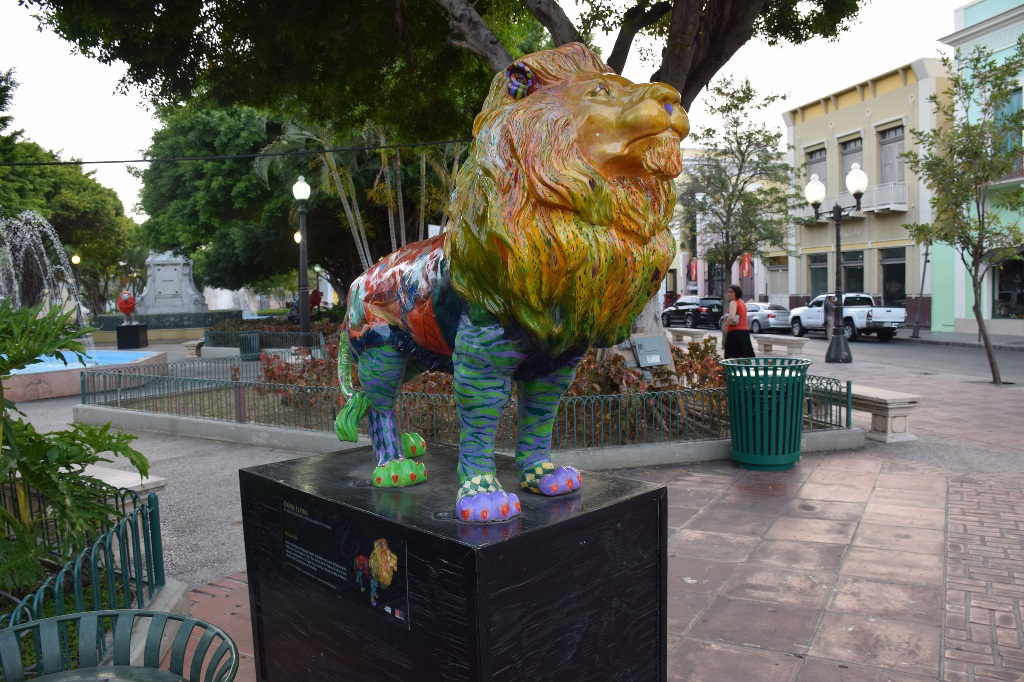
“Ponce, Puerto Rico” by Todd Van Hoosear, via Flickr (CC BY-SA 2.0)
Key Takeaway:
Look for names like Ponce, Cerro de Punta, and Buena Vista to identify high quality coffee beans from this region.
San Sebastián Coffee Farming
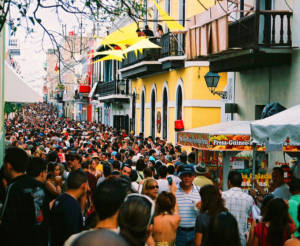
“Crowd in St. Sebastian II” by Angel Xavier Viera-Vargas, via Flickr (CC BY-ND 2.0)
Here we have San Sebastián. An inland municipality towards the northwest region of Puerto Rico.
This city was founded by wealthy families in the early 1800s. These families came to Puerto Rico after their homelands in Venezuela and the Dominican Republic were having revolutions.
Why is this imporant?
The families brought their coffee businesses with them and took over political power of the area as they established their coffee prowess.
It wasn’t until 50 or so years later that the town was christened San Sebastián after Saint Sebastián the Martyr. Saint Sebastián is the patron saint of archers.
Key Takeaway:
Saint Sebastián is a long established name in the Puerto Rican coffee bean industry.
Yauco Coffee Farming
Last, but not least…
Yauco Mountain is towards the southwestern end of Puerto Rico. The peak of Monte Membrillo is at an elevation of a little over 3500 feet.

“IMG_6026_6032” by Ben Schmitt, via Flickr (CC BY-ND 2.0)
While the city of Yauco is inland, the municipality stretches all the way to a small stretch of coast line.
Bottom line:
Hacienda San Pedro and Hacienda Santa Ana are well know coffee hacienda’s (plantations) that produce highly respected coffee beans.
The coffee that comes from Yauco command such respect that Yauco has earned the nickname El Pueblo del Café (or The Coffee Town).
Yauco was founded in 1756 by Fernando Pacheco of Corsican descent. Yauco to this day has a strong influence of Italian Corsican ancestory.
Key Takeaway:
Puerto Rican coffee bean quality can be found in names like Yauco, Monte Membrillo and Santa Anna.
4 Best Puerto Rico Coffee Brands
Now that we know there are fantastic coffee beans to be had in Puerto Rico, let’s uncover the best of the best.
These Puerto Rican coffee beans stand out, and are one of the reasons for the huge resurgence in popularity of Puerto Rico coffee brands in general.
Now for what you’ve been waiting for:
1. Yauco Selecto AA Coffee

[wpi_designer_button text='YES TO YAUCO' link='/internal/YaucoSelectoAACoffee' style_id='586' icon='digg' target='_blank']
But, there’s a catch.
These beans come in at #10 on the Forbes list of the ten most expensive coffee beans. In the article the price was $24 a pound. Since then supply and especially demand for Yauco Selecto AA Coffee has driven the price even higher.
What’s the real story?
Originally only sold on the island, the Yauco name has grown to world wide appeal.
Yauco Selecto AA Coffee beans provide a creamy buttery taste with chocolate undertones of almond. The body is considered full. Acidity medium.
These wet processed beans are born from Bourbon and Typica AA grade Arabica coffee plants.
Many compare these beans to Blue Mountain Jamaican coffee beans, but at a lower price. The climate that they each have is very similar.
Bottom line:
These are probably too expensive for everyday drinking (unless your lottery ticket came in). But, as a gift or a special treat for yourself, these coffee beans are too good to pass up.
We are featuring Yauco Selecto AA Coffee as one of the best, if not the best Puerto Rico coffee brands around.
2. Alto Grande Super Premium

[wpi_designer_button text='ALTO AQUI' link='/internal/AltoGrandeSuperPremium' style_id='586' icon='digg' target='_blank']
As a brand name, Alto Grande is one of the most recognized names in Puerto Rican coffee.
The creators of Alto Grande Super Premium coffee beans harvest these Arabica beans at the Alto Grande Hacienda in Lares.
This is one of the 10 remaining haciendas from the Spanish Colonial period.
The real story?
Alto Grande LLC was founded in the Czech Republic in 2011. The owners recognized the Lares coffee bean quality from halfway around the world.
This inspired them to form a long term agreement with Puerto Rico for import and distribution of these beans world wide.
These are medium roast beans that lean towards the darker side of medium.
These beans brew a full body cup that has a strong, defined, flavor that is its own.
The flavor has smooth chocolate notes with no bitterness and has bright, sparkling acidity.
Bottom line:
This was a close call. But, Alto Grande Super Premium came in a close second when ranking all of the best Puerto Rico coffee brands.
3. Cafe Yaucono Original Coffee Beans
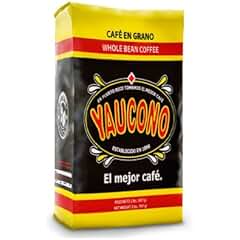
[wpi_designer_button text='YAUCONO NOW!' link='/internal/CafeYauconoOriginalCoffeeBeans' style_id='586' icon='digg' target='_blank']
Yaucono Coffee is one of the few coffee companies in Puerto Rico that lasted after the United States gained control of Puerto Rico when the Spanish-American War ended in 1898.
Founded in 1896, Yaucono Coffee was somehow made it through the changing of the guard when the US took control.
Why does this matter?
Their coffee quality was one of the reasons they were able to persevere. Yaucono has now had well over 100 years to hone their craft.
Cafe Yaucono Original Coffee Beans are a medium roast that are not oily. The also provide a noticeable caffeine kick.
Customers of this coffee bean repeatedly comment about how low the acidity is. So, if you have a sensitive stomach, then this may be the coffee for you.
If you are an espresso drinker, these beans produce superb crema.
In terms of complexity, not a lot of drinker are finding “notes” of other flavors like chocolate or almond. Most just describe the flavor as smooth and rich. However, a notable percentage took the time to mention that this is the best coffee ever.
4. Gold Coffee – Cafe Oro De Puerto Rico

[wpi_designer_button text='GET GOLD' link='/internal/GoldCoffee-CafeOroDePuertoRico' style_id='586' icon='digg' target='_blank']
The Beneficiado de Café Torres Corporation produces this coffee through their Cafe Oro brand using coffee beans from the Lares haciendas.
Cafe Oro purchases coffee bean from approximately 1,500 families in the mountains of Puerto Rico. They advertise that they provide a fair trade price to these families allowing them a higher standard of living.
The motto for Cafe Oro is quality from the flower to the cup of coffee (or “por eso garantizamos la calidad desde la flor hasta su taza de café”).
What’s the real story…
While we don’t consider this an expensive coffee, some felt the price was a bit high. And, that perhaps these beans are best as a gift for a special occasion.
However, at this price, they felt the quality made these beans a wonderful gift.
Some really like how Gold Coffee – Cafe Oro Puerto Rico performed with Cold Brew techniques. The result was smooth and rich to the taste. Which is why it makes our list of the Best Puerto Rico coffee brands.
Wrap Up: The Best Puerto Rico Coffee Brands
Look:
Puerto Rico is well known for the hustle and bustle of San Juan. But, the true coffee flavored charm of Puerto Rico is high in the mountain tops in the interior of the island.
Once a power house for coffee production before the United States took it over, Puerto Rico coffee brands are making a coffee comeback. With sales making exponential growth over the last 5 years, Puerto Rico is realizing that there’s gold in them there hills. Brown gold in the form of artisan coffee bean farming.
Do You Want the BEST Puerto Rico Coffee Brand?
Bottom line:
With elevations that are very conducive to coffee farming and rich volcanic based soil, the Best Puerto Rico Coffee Brands are no longer only being sold on the island. These high quality coffee beans are on the rise and people are beginning to recognize them as world class coffee beans.
10 Responses to “The Best Puerto Rico Coffee Brands”
Sorry, the comment form is closed at this time.
Thank you so much for putting so much time and effort into this!! This was very helpful!!
Mark,
You’re very welcome! I really appreciate your kind comment.
Regards,
Emily
Very informative, I’m now a local and reside very close to Lares. Very excited to continue your efforts in spreading the word on the wonderful coffee found here!
Larry,
Awesome! I enjoyed researching about Puerto Rican coffee for this article.
I hope you are doing well after Maria and that things are hopefully starting to move in the direction of getting back to normal.
If you have any first hand info about coffee or coffee beans in your area, I’d love to hear about it!
Regards,
Emily
Well written but your aim need much adjusting. Yaucono is not coffee from PR.
Luis,
Thank you for your comment.
The Yaucono I am featuring says on the bag “Café Yaucono, established in 1896, is Puerto Rico’s most iconic and beloved coffee”. And, if you go to their website, the name of the company is “Puerto Rico Coffee Roasters, LLC”.
Can you please elaborate as to why you think this?
Regards,
Emily
The coffee is not listed as Puerto Rican coffee because it is blended, mixed, with coffees of other countries, such as Brazil and Vietnam.
I am a year late to the article here but hopefully you will respond. Home roasting is on the rise in the US.
I will be in PR soon on a cruise. Is there a location not far from the main piers where I can buy green coffee to take home?
Though I will be staying a few days before the cruise, I won’t have much time to shop after the cruise. Customs rules appear that I couldn’t bring any beans purchased on the cruise and back into PR.
Thanks for an informative article.
Thomas,
Thank you for your kind comments. Hopefully I’m not too late to answer your questions.
I think coffee shops in OSJ, like Cuatro Sombras and Don Ruiz, will sell you coffee beans. Also, the Pueblo Supermarket or a super market near your ship’s port (not sure which port).
Hope this helps!
Emily
Cesar,
Thank you for your interest and comment. I couldn’t tell which coffee beans you were commenting about that is blended.
I hope you enjoyed the article!
Regards,
Emily